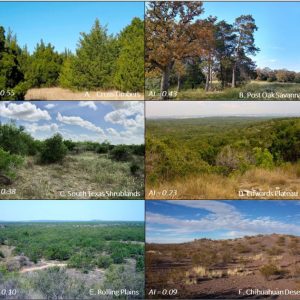Ecohydrological connectivity: A unifying framework for understanding how woody plant encroachment alters the water cycle in drylands

Grasslands and savannas in drylands have been and continue to be converted to woodlands through a phenomenon often described as woody plant encroachment. This conversion has profound implications for the ecosystem services that these landscapes provide, including water. In this paper, using examples from six case studies across drylands in the Great Plains and Chihuahuan Desert regions of the United States, we explore the ecohydrological changes that occurred following woody plant encroachment (WPE). In all cases, the increase in woody plant cover brought about modifications in connectivity, which led to profound ecohydrological changes at both the patch and landscape scales. At the wet end of the dryland spectrum (subhumid climates), increases in evapotranspiration following WPE led to reduced streamflows and groundwater recharge. In drier regions, woody plant encroachment did not alter evapotranspiration appreciably but did significantly alter hydrological connectivity because of changes to soil infiltrability. In semiarid climates where rainfall is sufficient to maintain cover in intercanopy areas concurrent with woody plant encroachment (thicketization), overall soil infiltrability was increased—translating to either decreased streamflows or increased streamflows, depending on soils and geology. In the driest landscapes, woody plant encroachment led to xerification, whereby intercanopy areas became bare and highly interconnected, resulting in higher surface runoff and, ultimately, higher groundwater recharge because of transmission losses in stream channels. On the basis of our review of the studies’ findings, we argue that the concept of ecohydrological connectivity provides a unifying framework for understanding these different outcomes.